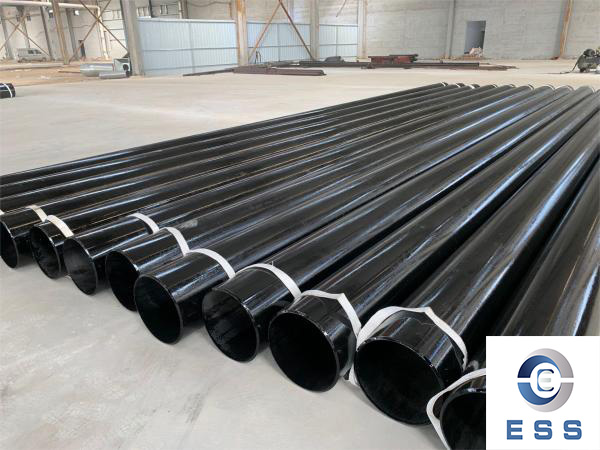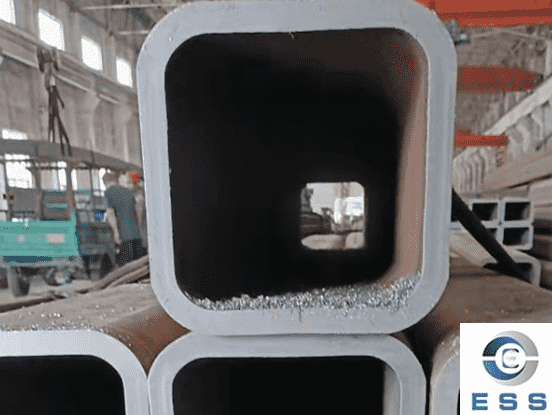How to choose different kinds of seamless carbon steel pipes?
Introduction:
Carbon steel pipes are widely used in various industries due to their durability, strength, and versatility. However, not all carbon steel pipes are the same, as there are different types available for different applications. Choosing the right type of carbon steel pipe is crucial to ensure optimal performance and longevity. In this article, we will explore the various types of carbon steel pipes and provide guidance on selecting the most suitable one for your specific needs.

Seamless Carbon Steel Pipes:
Seamless carbon steel pipes are manufactured without any welded joints, resulting in a uniform and continuous structure. These pipes are produced by piercing a solid billet of steel to form a hollow tube, which is then further processed to achieve the desired dimensions.
Seamless pipes offer superior strength and are ideal for high-pressure applications such as oil and gas transmission, refineries, and petrochemical plants. They provide excellent resistance to corrosion and can withstand extreme temperatures.
Welded Carbon Steel Pipes:
Unlike seamless pipes, welded carbon steel pipes are manufactured by joining two or more pieces of steel together through various welding techniques. This process creates a strong bond between the sections, resulting in a structurally sound pipe. Welded pipes are available in different forms, including longitudinal, spiral, and electric resistance welded (ERW). They are commonly used in applications where high strength and cost-effectiveness are desired, such as construction, water supply, and plumbing systems.
Low Carbon Steel Pipes:
Low carbon steel pipes, also known as mild steel pipes, contain a relatively low percentage of carbon (typically less than 0.25%). These pipes offer excellent ductility and are easy to weld, making them suitable for various general-purpose applications. Low carbon steel pipes are commonly used in plumbing systems, transportation of fluids, and structural applications where strength requirements are moderate.
Medium Carbon Steel Pipes:
Medium carbon steel pipes contain a higher carbon content (ranging from 0.25% to 0.60%) compared to low carbon steel pipes. This increased carbon content improves the hardness and strength of the steel. Medium carbon steel pipes find applications in automotive components, machinery parts, and structural projects that require higher strength and wear resistance.
High Carbon Steel Pipes:
High carbon steel pipes have a carbon content ranging from 0.60% to 1.0% or even higher. These pipes possess excellent hardness and are specifically designed to withstand heavy loads, extreme temperatures, and abrasive environments. Due to their exceptional strength, high carbon steel pipes are commonly used in applications such as mining, oil drilling, and machinery manufacturing.
Alloy Steel Pipes:
Alloy steel pipes are made from carbon steel combined with various alloying elements such as chromium, nickel, manganese, or molybdenum. These additions enhance the mechanical properties of the steel, including strength, hardness, and corrosion resistance. Alloy steel pipes are commonly used in industries such as power generation, chemical processing, and aerospace. They are suitable for applications that require resistance to high temperatures and aggressive environments.
Galvanized Steel Pipes:
Galvanized steel pipes are carbon steel pipes coated with a layer of zinc through a hot-dip galvanizing process. This protective coating prevents corrosion and extends the lifespan of the pipes, making them suitable for outdoor applications and environments with high moisture content. Galvanized steel pipes are commonly used in plumbing systems, irrigation, and construction projects.
Conclusion:
Choosing the right type of carbon steel pipe is essential for ensuring the success of your project or application. Consider factors such as the intended use, required strength, corrosion resistance, and cost when selecting the appropriate pipe. Seamless carbon steel pipes are ideal for high-pressure applications, while welded pipes offer cost-effectiveness. Low carbon steel pipes are versatile and easy to work with, whereas medium and high carbon steel pipes provide increased strength and durability. Alloy steel pipes offer enhanced properties through alloying elements, and galvanized steel pipes are suitable for outdoor applications. By understanding the different types of carbon steel pipes and their respective characteristics, you can make an informed decision and select the most appropriate pipe for your specific needs.













 Eastern Steel Manufacturing Co.,Ltd not only improve product production and sales services, but also provide additional value-added services. As long as you need, we can complete your specific needs together.
Eastern Steel Manufacturing Co.,Ltd not only improve product production and sales services, but also provide additional value-added services. As long as you need, we can complete your specific needs together.










